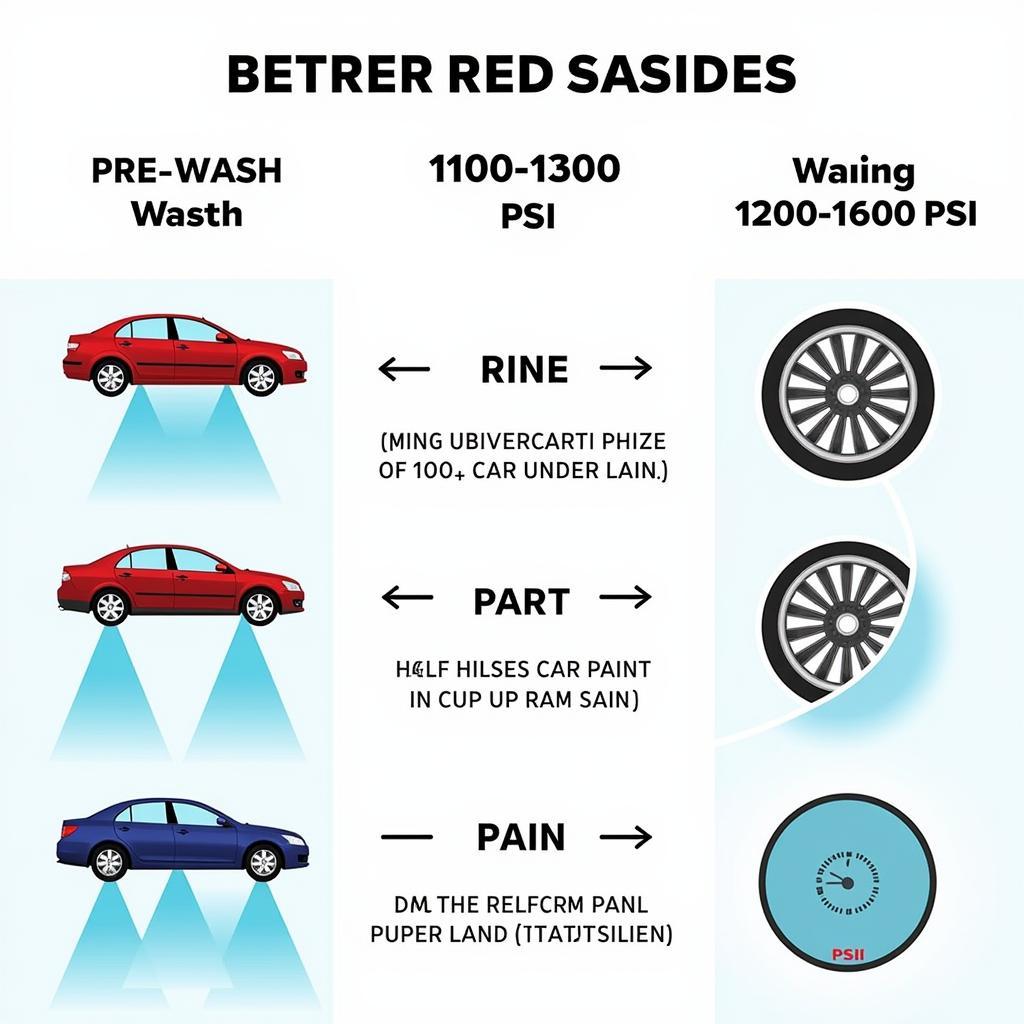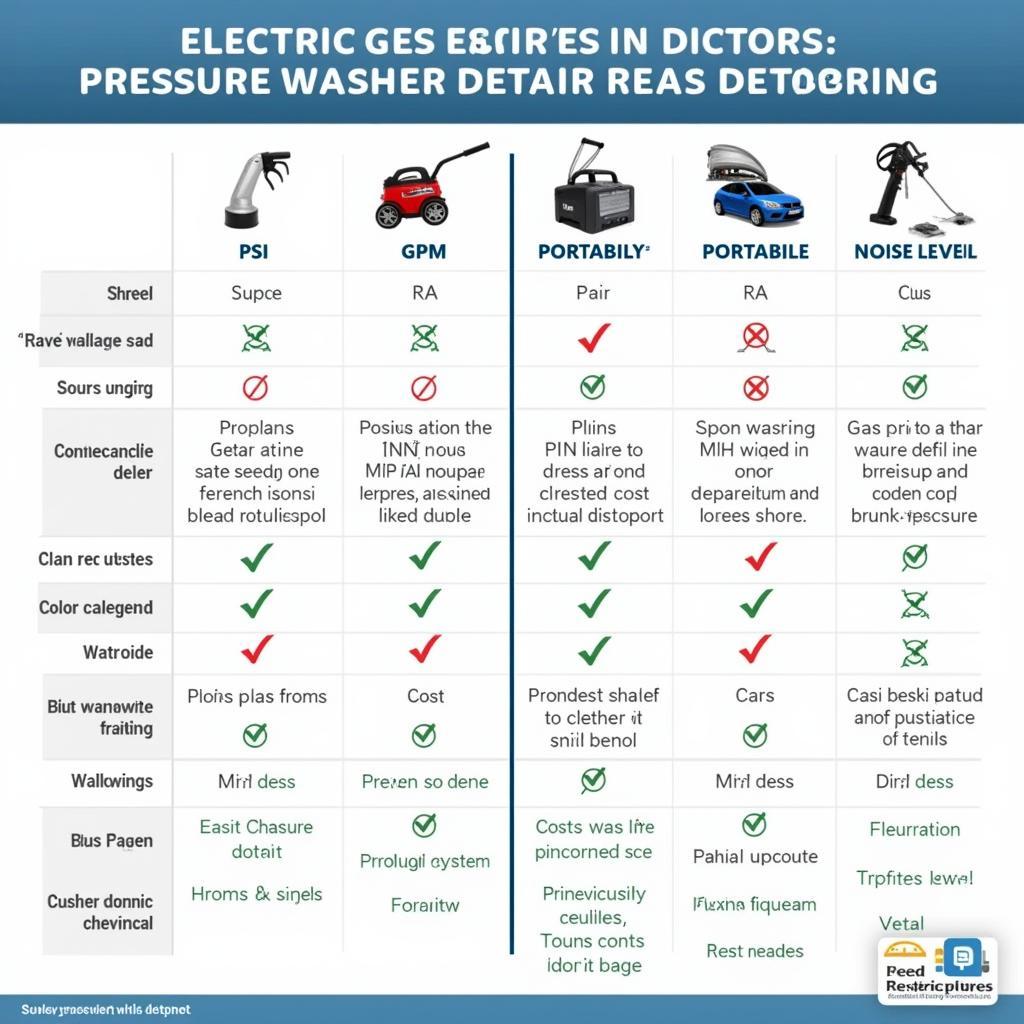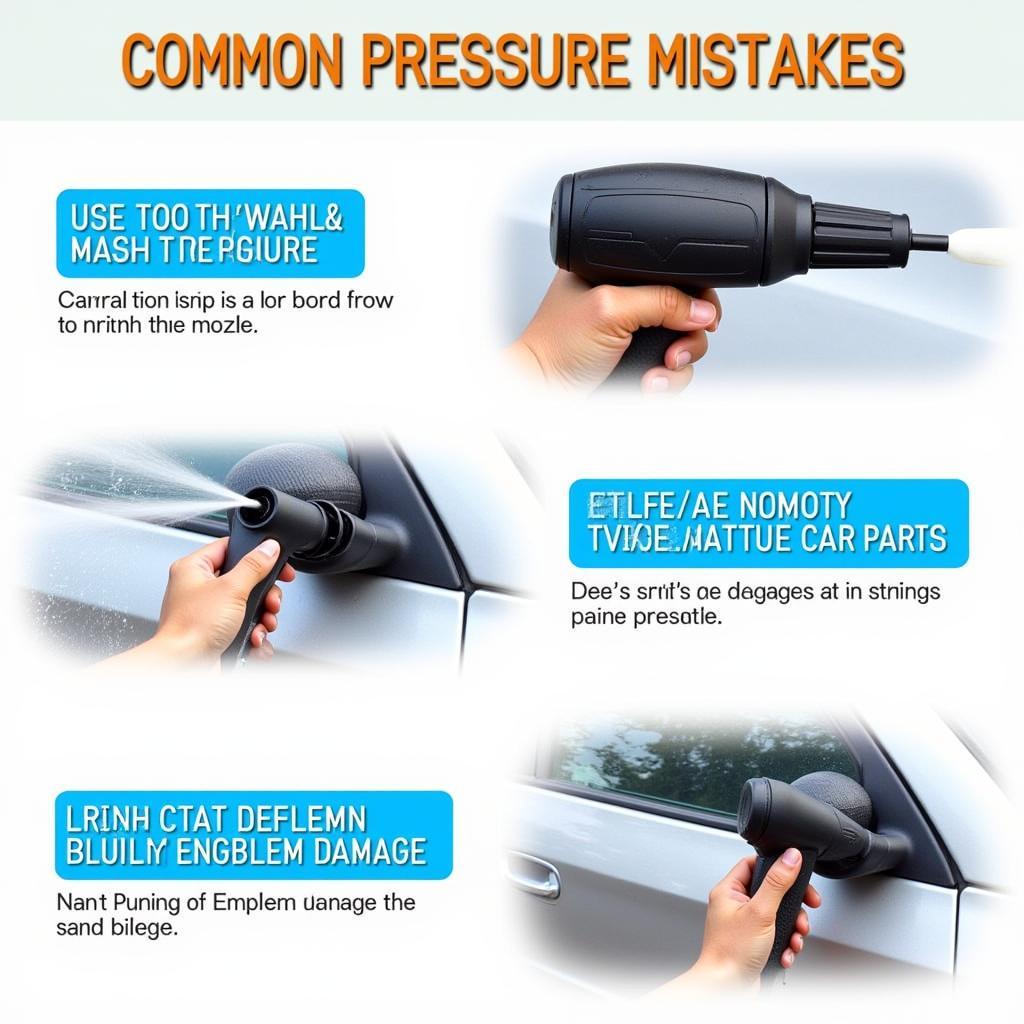Choosing the right pressure washer for car detailing can feel overwhelming with so many options available. Understanding PSI (pounds per square inch), and how it relates to safe and effective car washing, is crucial for achieving a professional finish without damaging your vehicle’s paint. This article will guide you through the optimal PSI for various car detailing tasks, helping you select the perfect pressure washer for your needs.
Many car detailing enthusiasts wonder about the ideal PSI for their pressure washers. The truth is, there isn’t one-size-fits-all answer. Different stages of detailing require different pressure levels, and using too much pressure can actually harm your car’s paint. Understanding these nuances will save you time, money, and potential headaches down the road. So, how many psi for electric pressure washer for car detailing? Let’s dive in!
Understanding PSI and its Importance in Car Detailing
PSI is the measure of force the water exerts when it leaves the pressure washer nozzle. Higher PSI means more cleaning power, but it also carries a greater risk of damage. Too much pressure can strip away wax, clear coat, and even paint, leaving your car vulnerable to the elements. Conversely, too low PSI can be ineffective at removing stubborn dirt and grime. Finding the sweet spot is key to a successful car detailing experience. This delicate balance is why understanding what kind of pressure is good for detailing cars is so vital.
 Optimal PSI for Car Detailing Stages
Optimal PSI for Car Detailing Stages
Recommended PSI for Different Car Detailing Stages
Different stages of the car detailing process call for varying PSI levels. Here’s a breakdown:
- Pre-wash: 1100-1200 PSI. This lower pressure is ideal for loosening dirt and grime without damaging the paint. Think of it as a gentle pre-soak before the main wash.
- Washing: 1200-1500 PSI. This range offers enough power to remove stubborn dirt and contaminants while remaining safe for most car surfaces.
- Rinsing: 1000-1200 PSI. A lower PSI is perfect for rinsing off soap and other cleaning solutions without leaving any residue.
- Wheels and Tires: 1500-1800 PSI. These areas can typically handle higher pressure due to their durability. This higher PSI helps remove brake dust and road grime effectively. However, exercise caution with painted or delicate wheels.
- Undercarriage: 1800-2000 PSI. This higher pressure setting is suitable for removing mud, salt, and other debris from the undercarriage. Be careful around sensitive components.
Remember, these are general guidelines. Always test a small, inconspicuous area first before applying full pressure.
Choosing the Right Pressure Washer
Now that you understand the importance of PSI, how do you choose the right pressure washer? Consider these factors:
- Electric vs. Gas: Electric pressure washers are generally sufficient for car detailing, offering a good balance of power and portability. Gas pressure washers are more powerful but can be overkill for car detailing and are less environmentally friendly.
- PSI and GPM: GPM (gallons per minute) refers to the water flow rate. A higher GPM helps rinse away soap and dirt more efficiently. Look for a pressure washer with adjustable PSI and a GPM of at least 1.5.
 Electric vs. Gas Pressure Washer for Car Detailing
Electric vs. Gas Pressure Washer for Car Detailing
Common Mistakes to Avoid
Here are some common mistakes to avoid when pressure washing your car:
- Using too much pressure: As mentioned earlier, this can damage your car’s paint. Start with a lower PSI and gradually increase if needed.
- Holding the nozzle too close: Keep a safe distance of at least 12 inches from the car’s surface to prevent damage.
- Ignoring delicate areas: Be extra careful around emblems, trim, and other delicate areas.
Knowing how much psi for car detailing is just one part of the equation. Proper technique is crucial for preventing damage and achieving optimal results.
 Common Pressure Washing Mistakes to Avoid
Common Pressure Washing Mistakes to Avoid
Conclusion
Choosing the right PSI for your pressure washer is crucial for effective and safe car detailing. By understanding the recommended PSI for different stages and choosing the right pressure washer, you can achieve a professional-looking finish without damaging your car’s paint. Remember to always start with a lower PSI and gradually increase if needed. Using the right PSI will make your car detailing experience more efficient and rewarding. This information is relevant whether you’re wondering what is the best electric power washerfor detailing cars or what kind of powerwasher should i use for car detailing.
FAQ
- What is the best PSI for washing a car? Generally, 1200-1500 PSI is a safe and effective range for washing a car.
- Can I use a pressure washer on my car’s engine? While possible, exercise extreme caution and avoid spraying directly at sensitive electrical components.
- How often should I pressure wash my car? It depends on how dirty your car gets, but generally, once a month is sufficient.
- Is it safe to pressure wash a classic car? Classic cars may require a lower PSI and extra care due to potential paint fragility.
- What is the difference between a pressure washer and a power washer? The terms are often used interchangeably, but generally, “power washer” refers to a higher PSI machine often used for commercial cleaning.
- Can I use a garden hose with a spray nozzle instead of a pressure washer? A garden hose won’t have the same cleaning power as a pressure washer, but it can be used for light cleaning.
- What other attachments can I use with my pressure washer for car detailing? Foam cannons, brushes, and undercarriage cleaners are helpful additions.
Need further assistance? Contact us via WhatsApp: +1(641)206-8880, or Email: [email protected]. Our 24/7 customer service team is always ready to help.

Leave a Reply